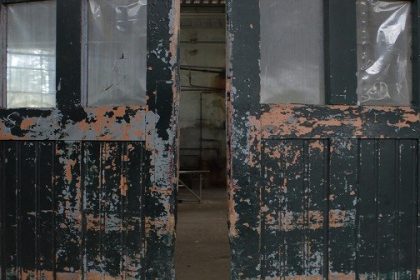
We told you at the beginning of June that we were going to try to talk you out of going multisite before you’re ready.
In our conversations about what to share with you during this series, we started thinking, “Wouldn’t it be helpful if a church that had actually had a bad experience with multisite would be willing to share their story so other pastors could learn from it?”
 Jeff Maness, senior pastor at Element Church in Cheyenne, Wyoming and author of Because You’re Called: Three Words That Will Change Your Life, graciously agreed to write about his church’s experience. Element is a church averaging 1,500 people each weekend and has a vision to plant campuses throughout the state of Wyoming. The church has been named one of the Fastest Growing Churches in North America by Outreach Magazine.
Jeff Maness, senior pastor at Element Church in Cheyenne, Wyoming and author of Because You’re Called: Three Words That Will Change Your Life, graciously agreed to write about his church’s experience. Element is a church averaging 1,500 people each weekend and has a vision to plant campuses throughout the state of Wyoming. The church has been named one of the Fastest Growing Churches in North America by Outreach Magazine.
I’ll let him tell you their multisite story.
The first time we launched a campus we were just over three years old and averaging 855 people for the year. At that time we had three Sunday morning services, and we were bursting at the seams in the last two. We knew we needed more space, but we didn’t feel doing another service at a non-optimal seating time would help us with our space issues.
As we fasted, prayed and discussed among our leadership, it seemed as if God was opening up the opportunity to start another campus on the other end of town (a 15 minute drive). Looking back, the need for another campus, and even the open door from God to attempt it were obvious. We weren’t going to reach more people in our current situation, and we didn’t have any red flags or closed doors to seeking this new opportunity.
The vision from the get-go was, ‘More space to reach more people in the most affordable way.’
But we made some mistakes and learned some key lessons along the way that I think other pastors can learn from.
1) We offered live preaching on launch Sunday at the new campus.
To attract people to the campus, we had decided not to announce where I would be preaching live on Sundays. The only guaranteed live preaching service was the 8:30am service at our Broadcast Campus. We would record that service, and then either use the video at our South Campus or I would preach live at the South Campus and we would show video at our 10:00 and 11:30am services at our Broadcast Campus. This was a fatal flaw in our planning.
Because we wanted to launch well, I preached live at the South Campus on opening weekend. It was the very next week, when we showed video, that people started asking when I was going to be back live again.
2) The campuses were too close in proximity.
While Cheyenne is the largest city in Wyoming, it is very small by national comparison at around 60,000 people. We placed our campus about as far away from the Broadcast Campus as we could, but it was a portable location in a high school that just couldn’t compete with the amenities that our permanent Broadcast Campus had.
We had many dedicated, hard-working volunteers and core people committed to the campus, but when people could just attend the permanent location with much better facilities for their children and for themselves, it was a no-brainer where they were going to attend. It required no more time for most people to get to the permanent location as it did to get to the portable one.
3) We set up our campus pastor to fail.
We placed a volunteer leader as the ‘campus pastor’ and really set him up to fail. The amount of oversight, leadership, pastoral care and vision-casting needed for a second site was more than we were ready for, and much more than we should of placed on a volunteer.
4) Our staff were stretched thin and lost focus.
Just adding one more campus stole a lot of ministry energy. Now our worship guy wasn’t just planning a team for one campus, but for two. Same for our kids pastor, our tech director and so on.
We didn’t go out and hire a bunch of new people to run the campus. We were relying on the people currently on the team to get it done. That takes its toll. It wasn’t too long into the campus and you could see the energy level draining from our team. You could tell it was becoming a chore to keep the campus open.
5) The physical, emotional, relational and financial strain on your church from launching just one site is more than I could possibly have imagined.
I feel like launching a campus was harder on me as a leader than starting a church. It’s just a different beast.
6) We didn’t fully consider our other options.
We eventually added a Sunday evening service that I wish we would have tried before a campus. It has far exceeded the reach of the campus while it was open, and it gave us the space we needed to get us to our remodel and expansion.
In fact, after our remodel, our Sunday evening service became such a viable option for us that we kept it, even though we didn’t really need it any longer. Funny thing is, we are back in the same boat again now. We have maxed out our optimal seating times in our expanded facility and are looking to add an additional service instead of launching a campus.
7) We finally closed the doors.
As energy waned, I think we even began to neglect the needs of the campus, which was in decline, so we could focus on the needs at the Broadcast Campus, because that is where all the excitement and energy still was. You could feel it among the volunteers and the whole congregation as well. Everyone wanted the South Campus to succeed, but it was literally sucking the life out of our ministry. We went into the campus with tons of momentum, and this launch all but stopped that momentum dead in its tracks.
It was confirmation when we decided to close the campus that I don’t think we had even one person object.
The one place we did win during this season was in volunteer recruitment. We have people now, who are high-level volunteers, that started serving because we were launching a campus. We had to recruit, raise and release volunteers across all levels of our ministry in order to get this thing off the ground. From parking to the team that packed everything in and out, it was a massive volunteer recruitment tool. Nothing motivates people more than vision.

